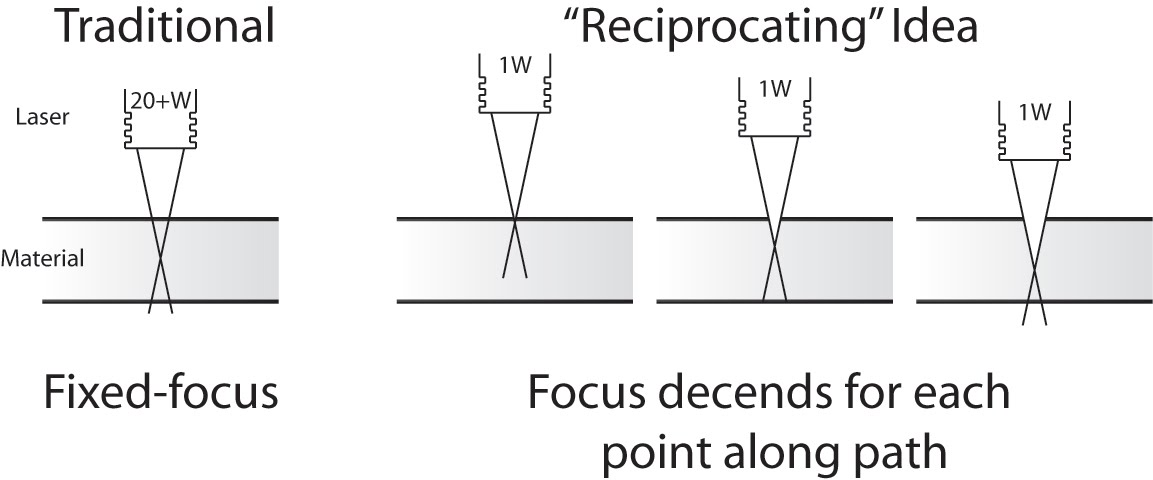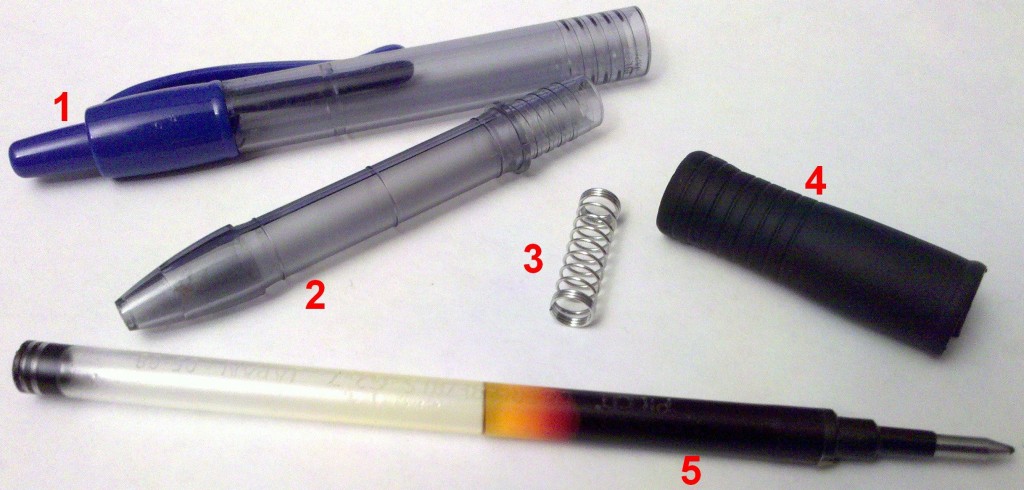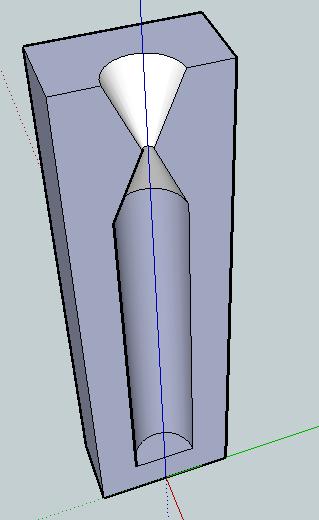Peter Jansen’s latest post about selective laser sintering (SLS) is nothing short of amazing. Most of his posts on the RepRap Builders blog posts deal with his adventures and research into SLS fabrication – basically directing a laser over a bed of powder to fuse powder in successive layers into a 3D object. Since the object is being created in a bed of powder and any new layer is supported by the powder above it, the powder print media becomes it’s own support material.
His latest post diverges from his adventures with SLS 3D printing and details his efforts at building a DIY laser cutter. His idea is for a “reciprocating laser” which would change the focal length or the height of the laser above the material being cut. Peter points out that commercial high power laser cutters essentially brute force burn through the entire depth of the material to be cut. They’re so powerful that it doesn’t matter that the laser is out of focus and “cooler” at different depths.
He has demonstrated a proof of concept using much lower power laser to cut material by lowering a much lower power laser as it cuts material. The downside is that the lower power laser requires a much longer time to burn through the material – having to hit the same area several times at different depths to cut all the way through. His proof of concept setup was about the size of a CD/DVD drive – since CD/DVD drives, motors, and housing provided most of his building materials. So far he’s been able to burn through most of two CD case backs – about 2mm together. He’s hoping to push it to cut thicknesses up to 3.0mm to 4.5mm.
The incredibly small size of his setup means that it can only very small pieces of material. However, this gave me two ideas:
- If the low power lasers are so cheap, why not install multiple lasers at different focal lengths?
- If the entire setup is that small, what about making the entire setup mobile? 1 Think hexapod CNC mill. If a laser cutter wheeled or hexapod robot was as small as a CD drive, you could conceivably just take out a large sheet of acrylic or thin plywood, set the robot in the dead center, and let it go. 2
- This reminds me of one of my favorite sayings. “If Mohammed won’t go to the mountain, the mountain must come to Mohammed.” [↩]
- The robot could stay oriented in any number of ways. You could draw a grid on the material, the material could have a thin paper coating with LeapFrog style micro-dots that told the robot it’s location, you could project a grid onto the material with light or guide it with another laser like a laser guided missile. [↩]



